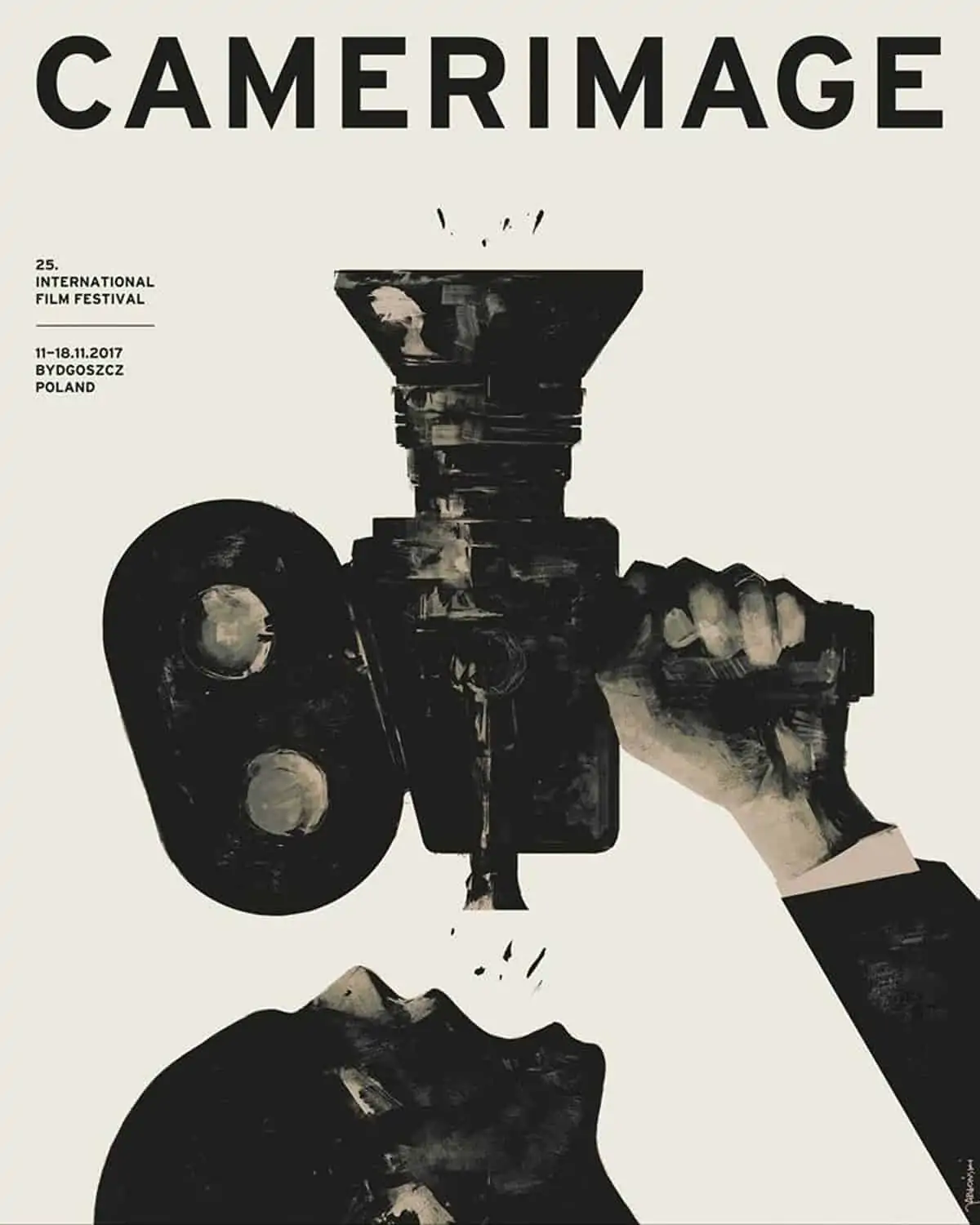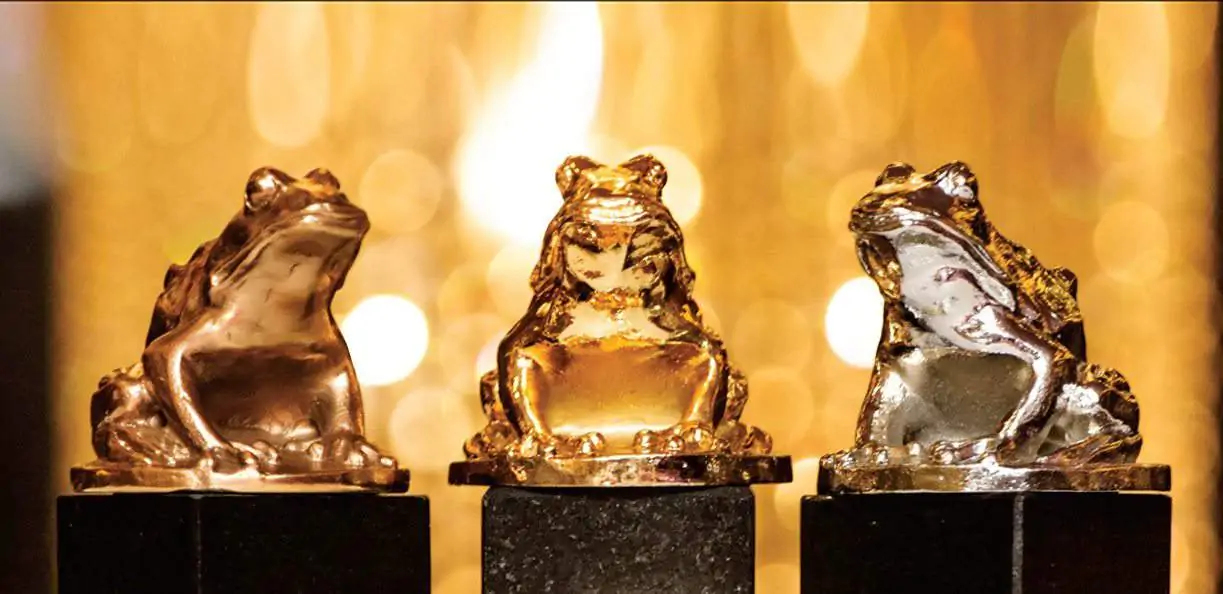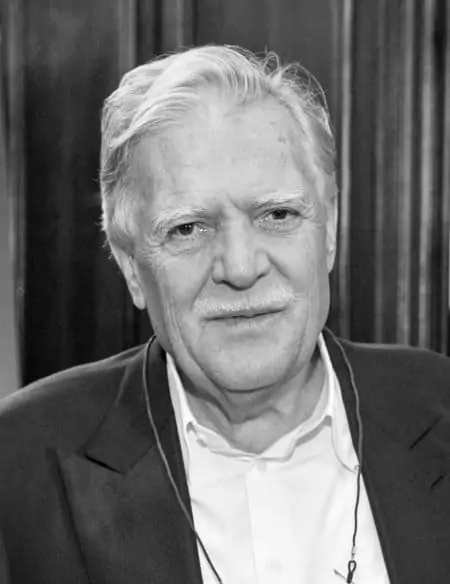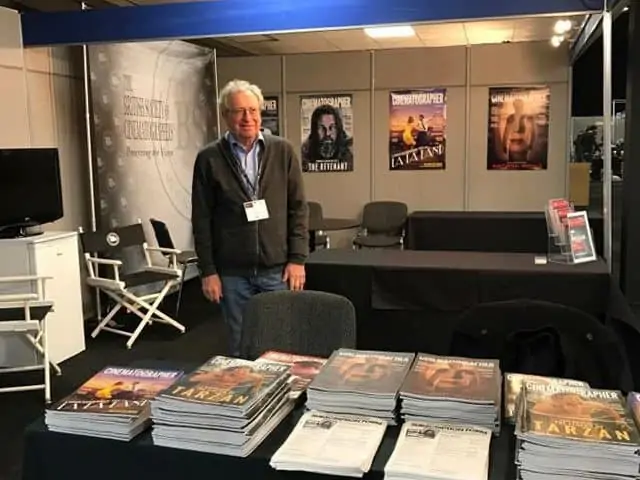Silver Jubilee
Special Report / 2017 Camerimage Diary / Ron Prince
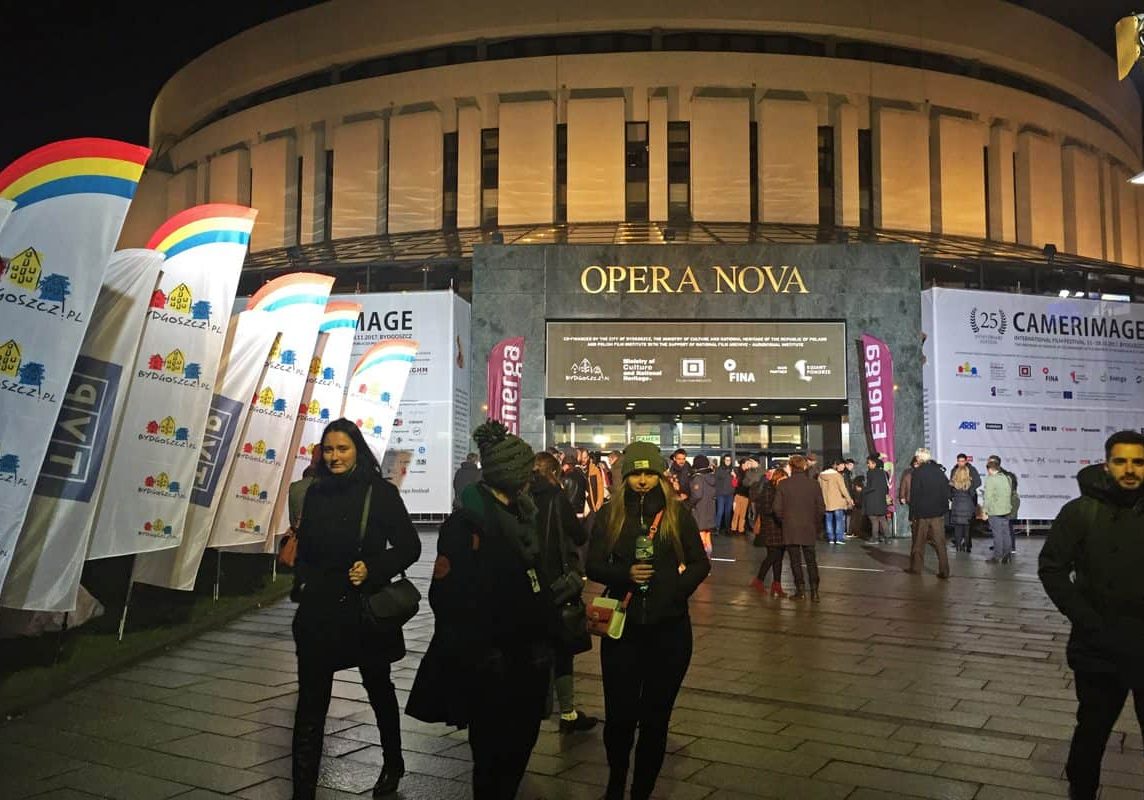
Silver Jubilee
Special Report / 2017 Camerimage Diary / Ron Prince
One man's journey through the mirth and merriment of the 25th Camerimage Festival of Cinematography.
Monday 13th November:
It’s stupid o’clock. 4.30am to be precise. Therefore way-too-early to discover oneself in an airport concourse that’s absolutely choking with cheap-flight passengers running hither and thither. You get the picture. Erin Ibrahim from Tiffen Filters kindly lets me jump into the ever-so-long aeroplane boarding queue, and before you can say “Camerimage – here we come for the thirteenth time”, we’re on-board… and low and behold… suddenly there are plenty of other familiar faces proffering kisses, hugs and handshakes galore, alleviating the early-morning murk. There’s Alan, Katie Swain BSC and Angus Hudson BSC, Kimberly Snyder CEO of Panavision with Jeff Allen from PV London, Mark from Mission Digital. My window-seat travelling companion is underwater gaffer Aaron Keating.
It’s mild when we step-off the plane and on to Polish tarmac in Bydgoszcz. This week I’m due on stage three times – interviewing Ed Lachman ASC about his work on Todd Haynes’ Wonderstruck, hosted by Kodak, plus a brace of gigs, sponsored by Panasonic, one about shooting 4K for Netflix, the other a look at Roland Joffé’s The Forgiven, shot by William Wages ASC. Can't wait!
As everything has run like clockwork, there’s time to enjoy some owsianka (porridge), plus eggs and bacon, before we hit the Opera Nova to register for our passes. Also breakfasting, with more embraces, are Andrew Dunn BSC, Nigel Walters BSC, Rachel Morrison ASC, AFC president Richard Andry, plus Hugh Whittaker, Mark Furszedon and Raj from PV London. Ed Lachman and Chris Doyle are fresh-in from what looks like a large night out – they were co-panellists yesterday with Anthony Dod Mantle DFF BSC ASC on a session called “Like A Virgin” aimed at budding DPs. Our friends from American Cinematographer, Steve Pizzello and his good lady Delphine, are in furs, reporting that this year’s disco has been transplanted into a shopping mall.
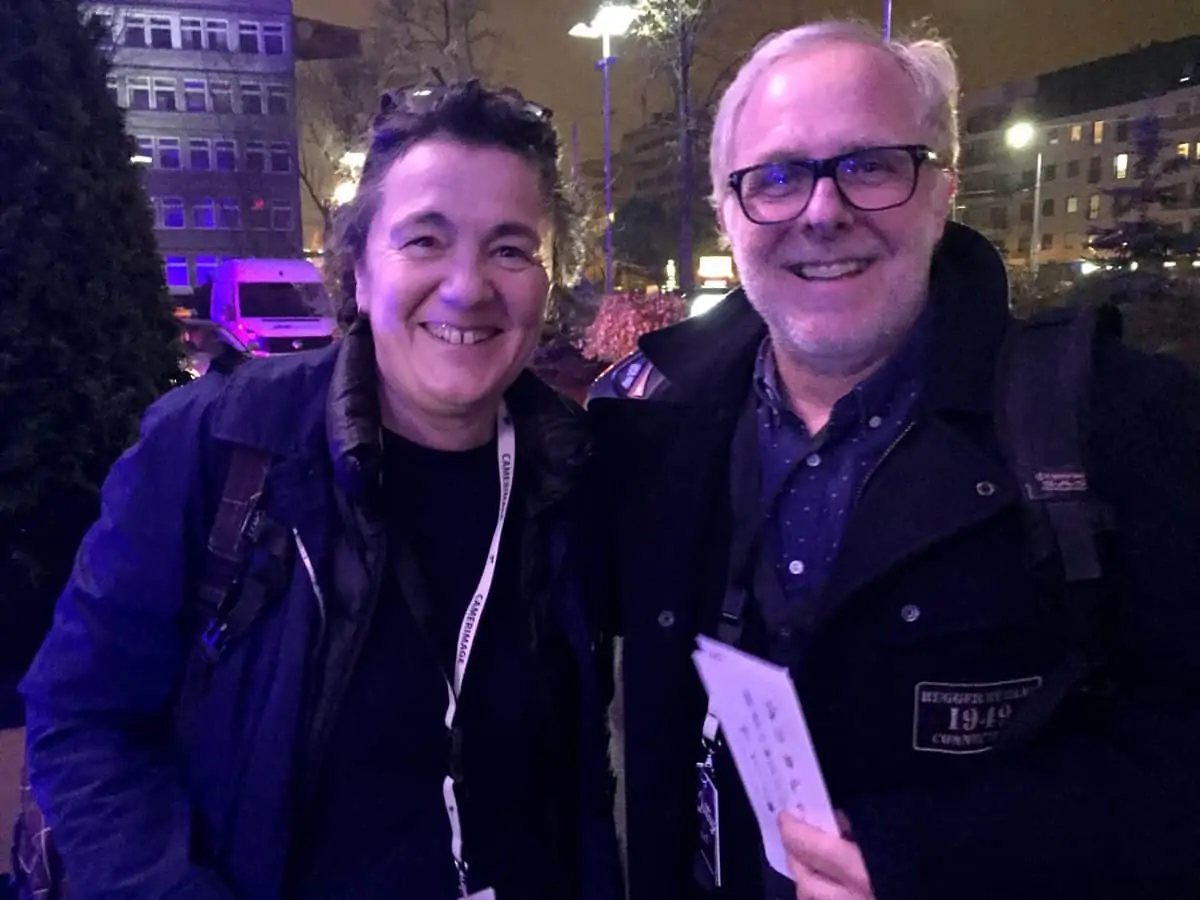
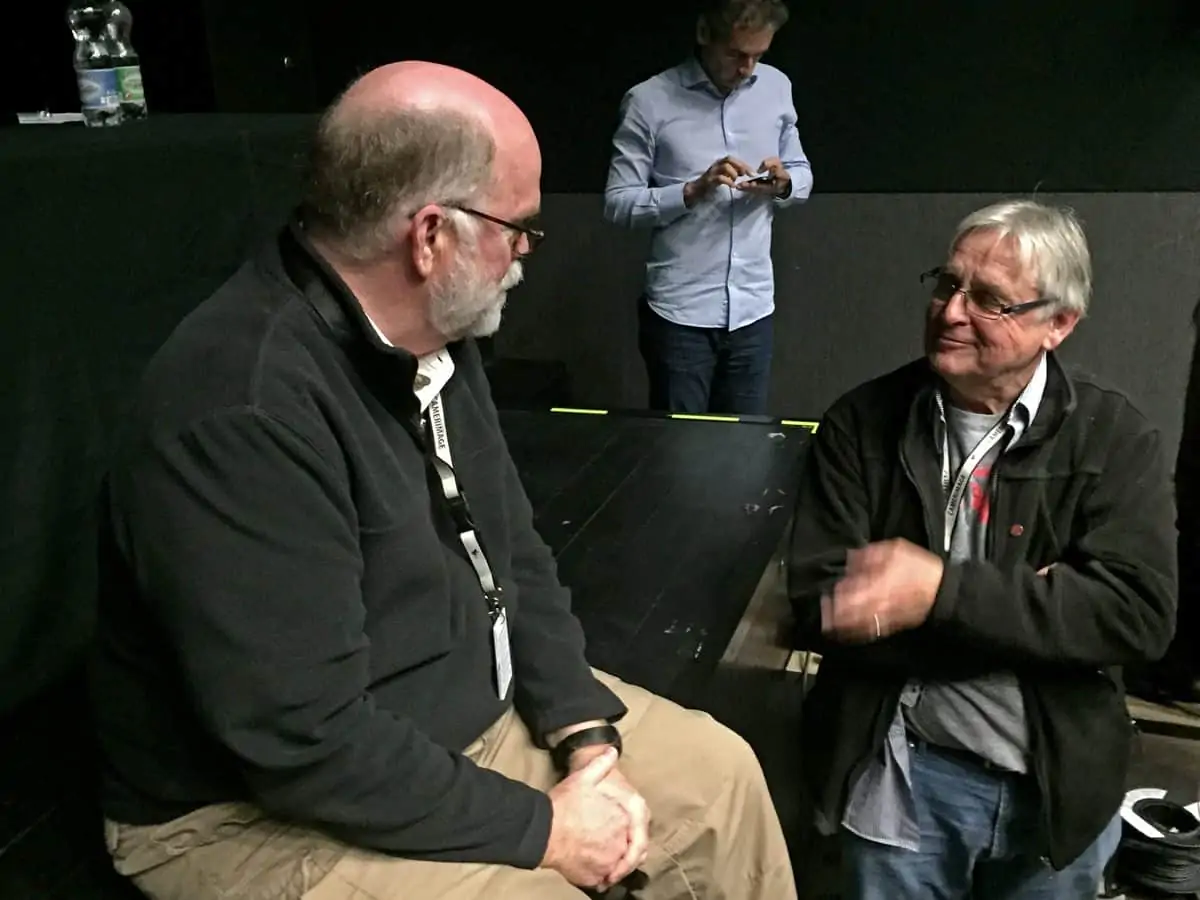
Over at the Opera Nova is the welcoming sight of Robert & Robert, the ever-so fearsome looking security dudes who, over the years, have become poster boys for British Cinematographer Magazine. They love it! And anyone caught wearing a rival T-shirt ought to jolly well watch their step. Thoughtfully, Alan has brought our two terrifying heroes copies of last year’s Camerimage Diary, for which they posed in a snapshot clutching our humble journal with the encouragement to “Read it, or else!”.
Up in the bar, word has it that Murder On The Orient Express, with Sir Kenneth Branagh and Haris Zambarloukos BSC GSC in attendance, made for a wonderful opening screener to this 25th anniversary special of the festival. Kate Kotcheff from Wizzo laments an irksome change to the ticketing system at the Multikino, which effectively means seats are nigh-on impossible. By golly, I hope they’ve fixed the irksome seating arrangements for press and media in the Opera Nova. Carey Duffy from Cooke Optics relates that Doctor Who is going Anamorphic, supplied by Films @59. Along with deployment on BBC Natural History programmes, purchases by OTT channels like Amazon and new customers in China, Cooke glass is selling like hot cakes.
Thankfully, they have addressed the seating strictures in the Opera Nova, as I take a decent seat to watch Matty Libatique ASC’s work on Mother!. The movie doesn’t suit all tastes, but I personally love the chaos and gradual drenching of the images in visceral red during the third act. Nice to see he shot it on Super16mm too. Speaking of celluloid, Adrian Bull and John Mahtani of Cinelabs are brandishing film-strips as business cards, and recounting how they’ve supported Star Wars: The Last Jedi (DP Steve Yedlin ASC) and The White Crow (DP Mike Eley BSC).
After a screening of Loveless, shot with supreme control by Mikhail Krichman RCG, it’s suddenly been a long day. Tired as a newt, this giblet is off to bo-bo land!
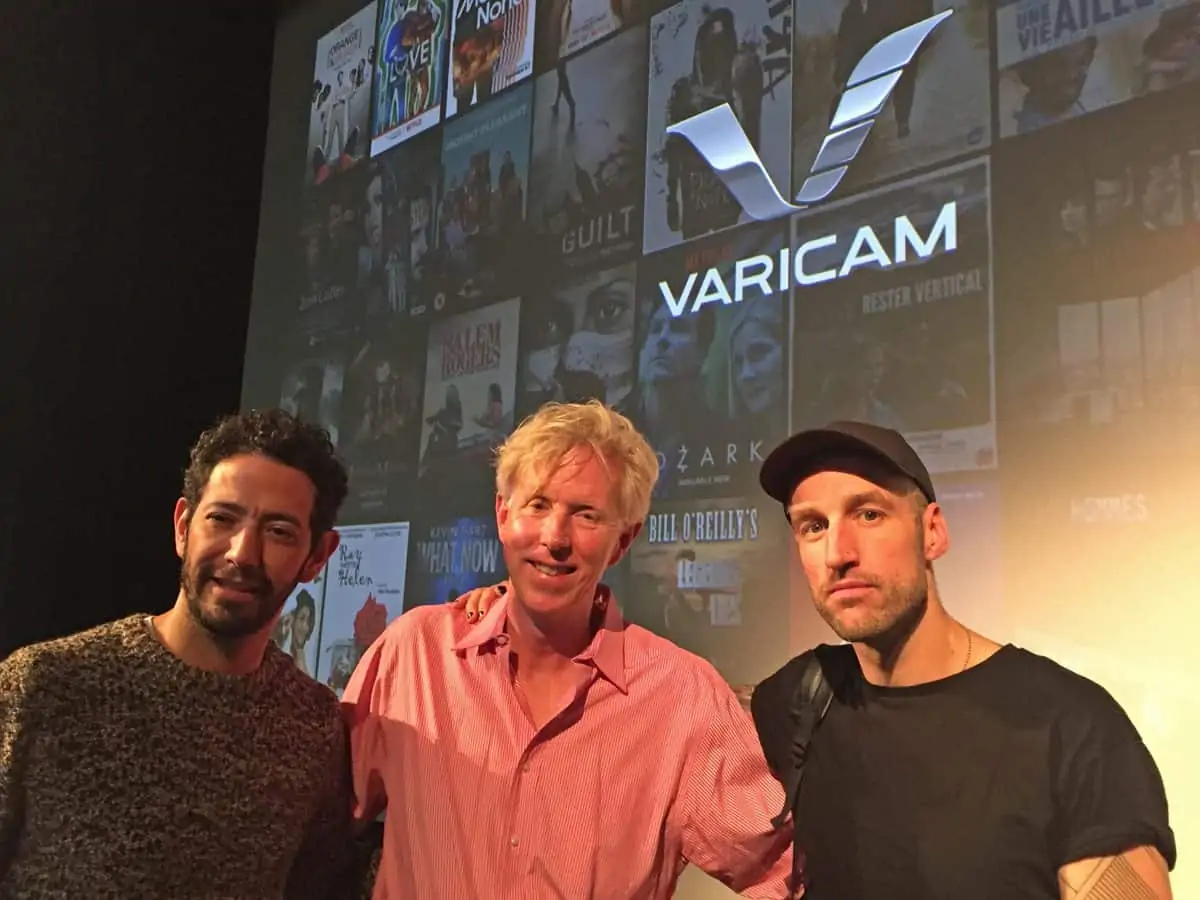
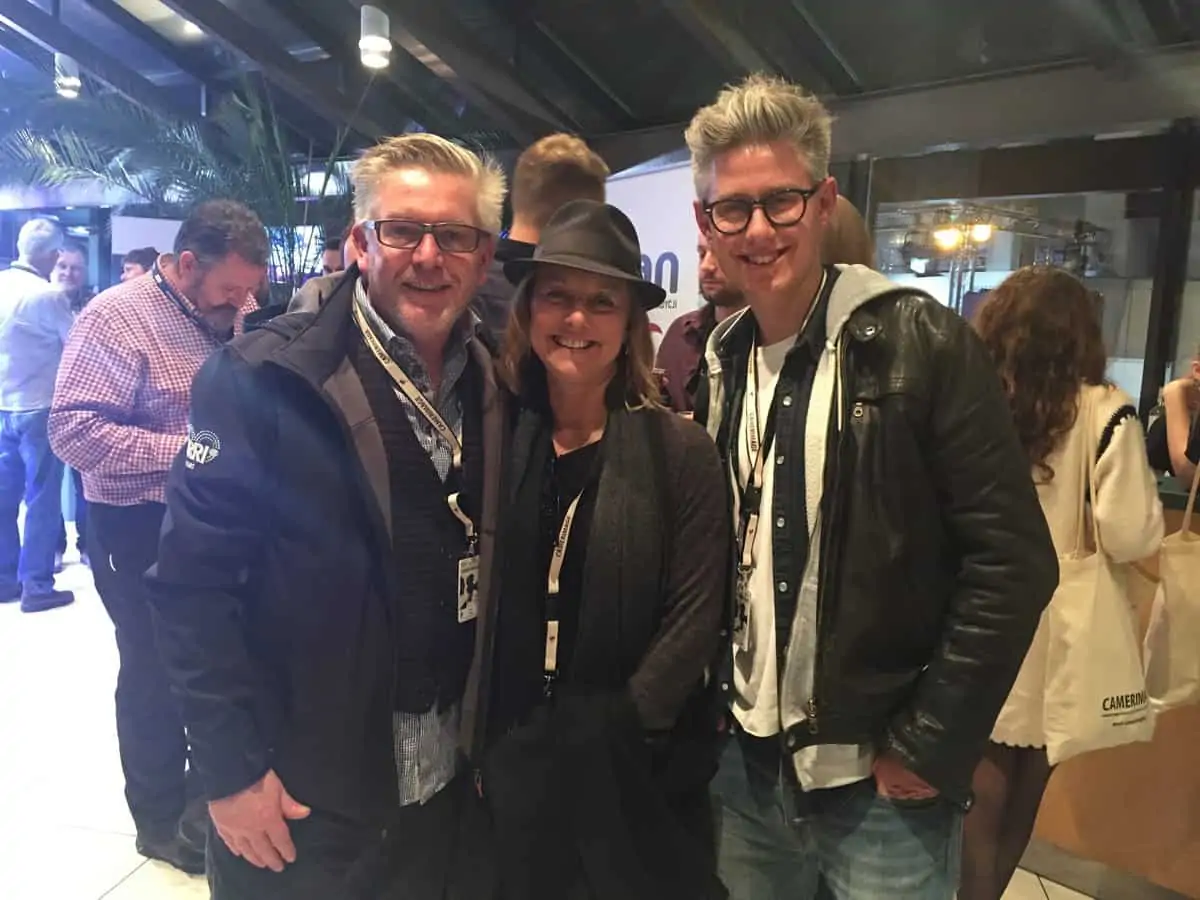
Tuesday 14th November:
Owsianka with Steven Poster ASC, president of the International Cinematographers Guild Local 600 IATSE, who’s looking doubly-hip on account of a cool trilby and appearing fresh as a daisy, despite having arrived just last night from LA. He’s here on Polish Student Film jury service. We have a serious and ranging conversation about working hours and the need for safety on-set. Sarah Jones is recalled. Steven shows me the Guild’s Safety App (covered in previous issues) and a brand new video they’ve just produced, using crash-test dummies, showing the possible perils of shooting in cars, rather than on trailers. In the event of an accident or an airbag going off, there’s a risk to life and limb should a camera/lens lump hit cast/crew. “Safety is no accident,” says Poster, “and it must remain a matter of worldwide concern.”
With Wonderstruck on the mid-morning bill at the Opera Nova, I chat with Ed Lachman and Chris Doyle about what inspired their imagemaking from a young age. For Ed, whose voice is sounding a wee bit scratchy, it was the influence of his projectionist father. For Chris it was unequivocally a combination of music and mescaline.
Hoorah! I have the perfect viewing position for Wonderstruck, sitting next to young Colombian DP, Johan Florez, now residing/working in Italy. Johan tells me he’s drawn partly because Wonderstruck was shot on film, and partly out of an adoration for Ed’s work. To my eyes, the movie is sublime, an awe-inspiring cascade of some of the most beautiful and evocative images you could hope to see. In the queue for coffee and a cake afterwards, Nina Kellgren BSC concurs, “I love Ed’s ability to take us to another place and time.”
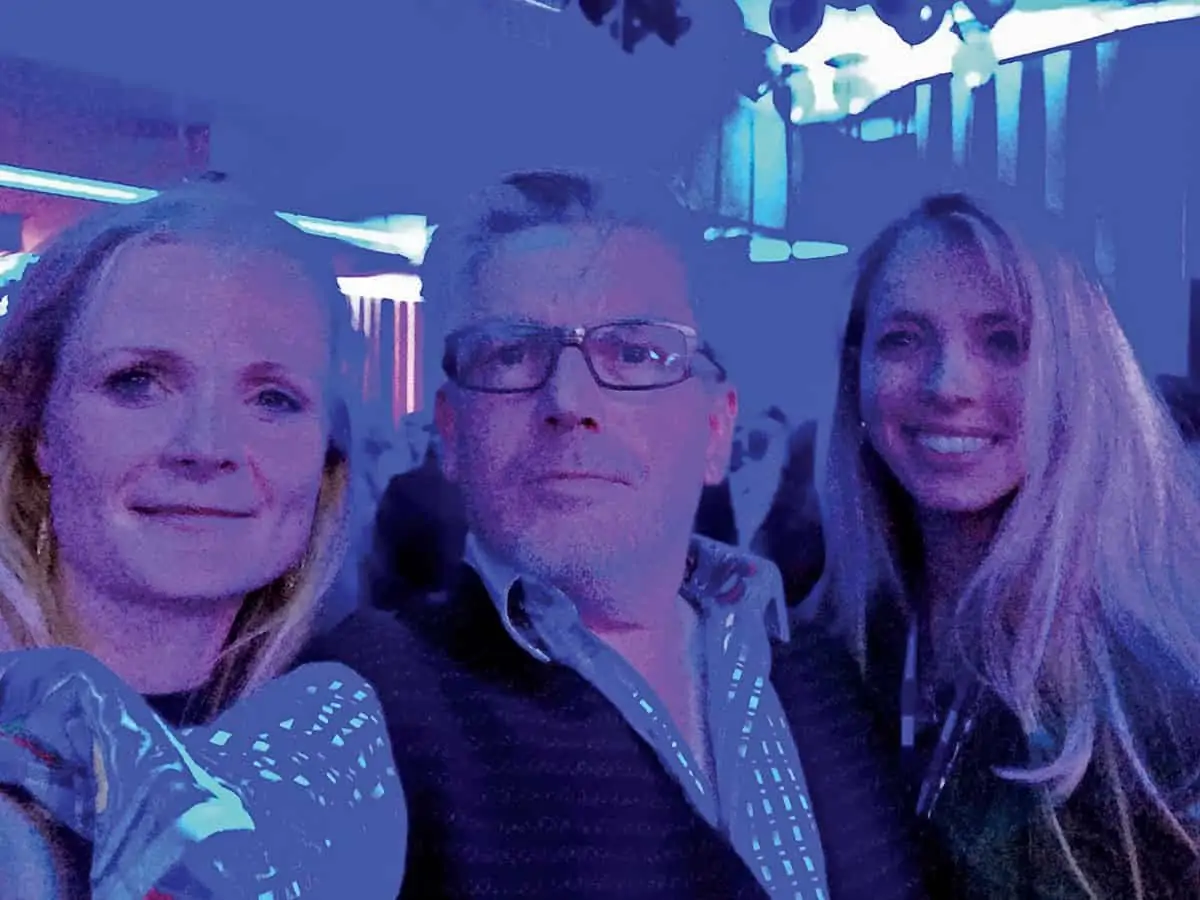
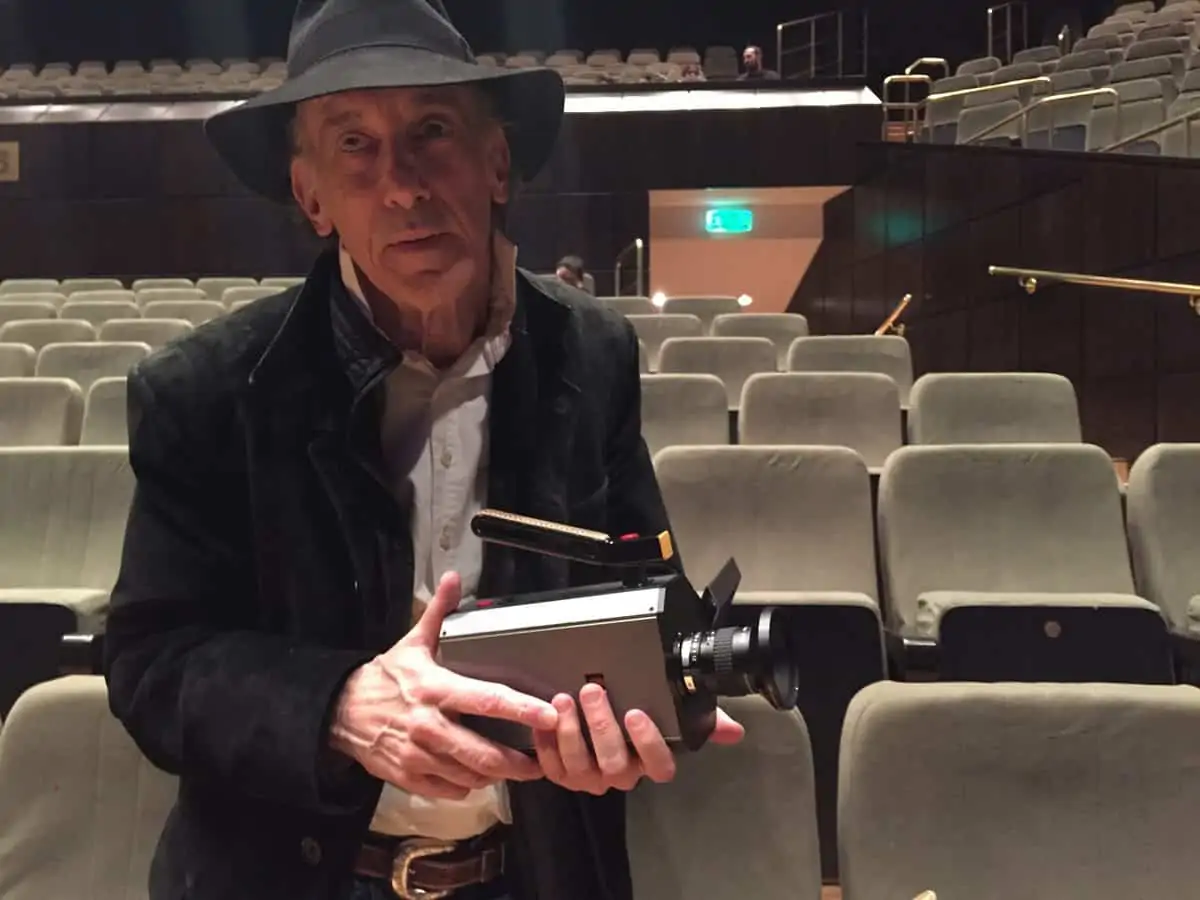
On the way to Ed’s press conference, Roberto Schaefer AIC ASC reveals brief details about shooting The Red Sea Diving Resort – about the rescue and transport of Ethiopian Jews to Israel in 1981 – which he recently completed in South Africa using Panasonic Varicam. Lots of sea and sky. Lots of night-time photography involving some very dark-skinned actors and minimal light. But he’s loving the Varicam’s 5000 ISO for that! At the press conference, Ed’s voice is definitely on shakey ground, as he relates details about Wonderstuck.
Panasonic’s shooting 4K for Netflix is very well-attended, as Bobby Shore CSC, Pepe Avila Del Pino and Patrick Stewart take turns on the mic, relating how they have used Varicam to respectively photograph Anne With An E, Ozark and Arrested Development.
I’ve heard that Three Billboards Outside Ebbing, Missouri, shot by Ben Davis BSC, is unmissable. But I am late to gain entry. Fortunately, Marek Zebrowski accedes to slipping me in by the back entrance, along with a clutch of jury members, including Michael Apted and Stephen Goldblatt BSC ASC, passing Lone Star and Justyna Sieniawska in the green room. I get another great seat, with Louis Philippe Capelle as my viewing buddy. In the on-stage preamble, Ben says, “the script was a gift,” and “if you can see the camerawork, then I have not done my job properly.” Until this point The Florida Project was my top film of 2017, but Three Billboards turns out to be a bit special. Script, acting, sound, direction and editing all in perfect harmony with the invisible cinematography. It’s a triumph, and the audience love it.
Dismounting from a luxury BMW, that is used to ferry the VIPs around the town and has a massage facility in the front passenger’s seat, we’re at ARRI’s unmissable party. It’s the company’s 100th year and the party seems more ram-jammed than normal. The apple pies are irresistible. As per normal, the Frog nominees are greeted to applause as Marek Zydowicz and Franz Kraus dole out commemorative statuettes. Time passes fast catching up with Judith and Ute from ARRI’s marketing teams, and chatting to Toby Tomkins from Cheat about his grading work on Kaleidoscope (DP Philipp Blaubach).
I share a taxi ride back to the Holiday Inn with agent Anne Murtha, who fondly remembers festivals of yore, including one in Lodz when she and Vilmos Zsigmond ASC HSC took a tearful trip to Auschwitz for the day.
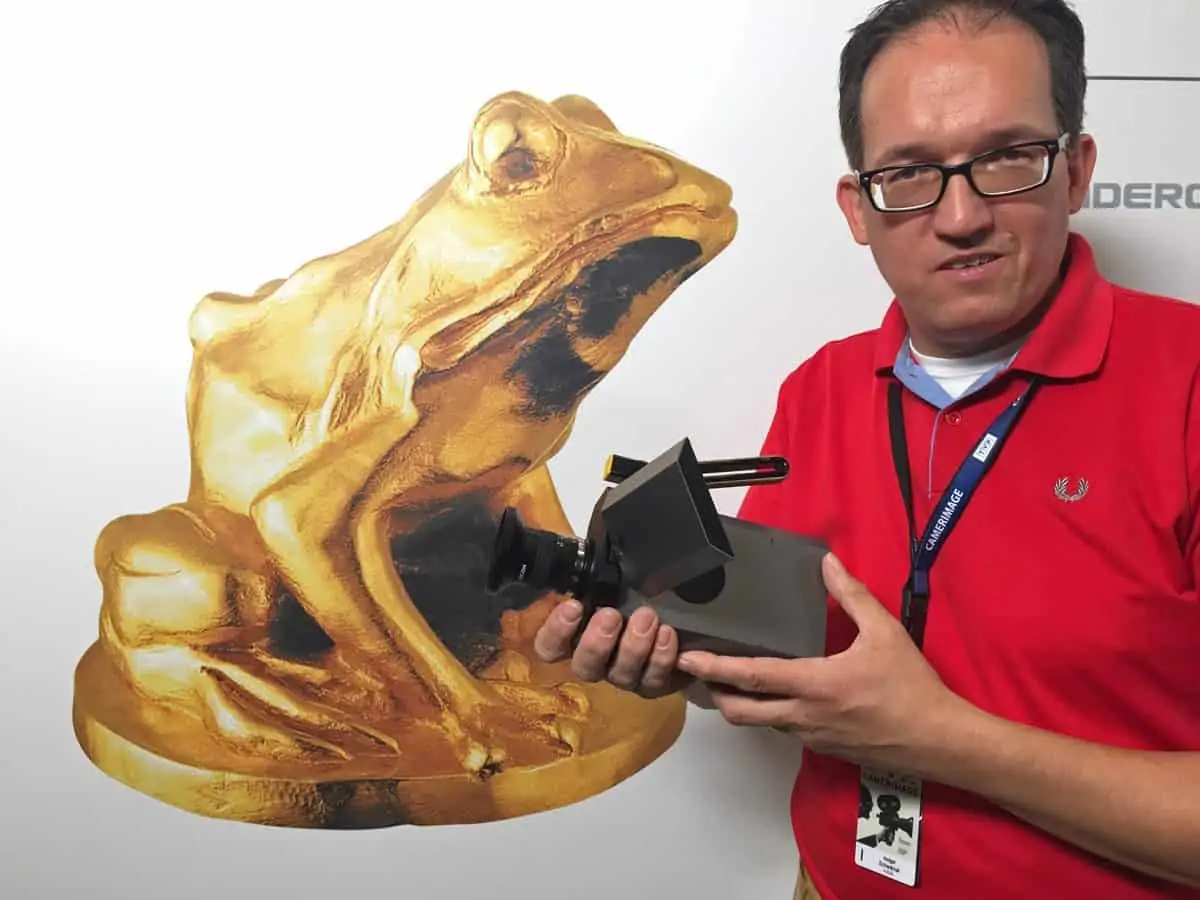
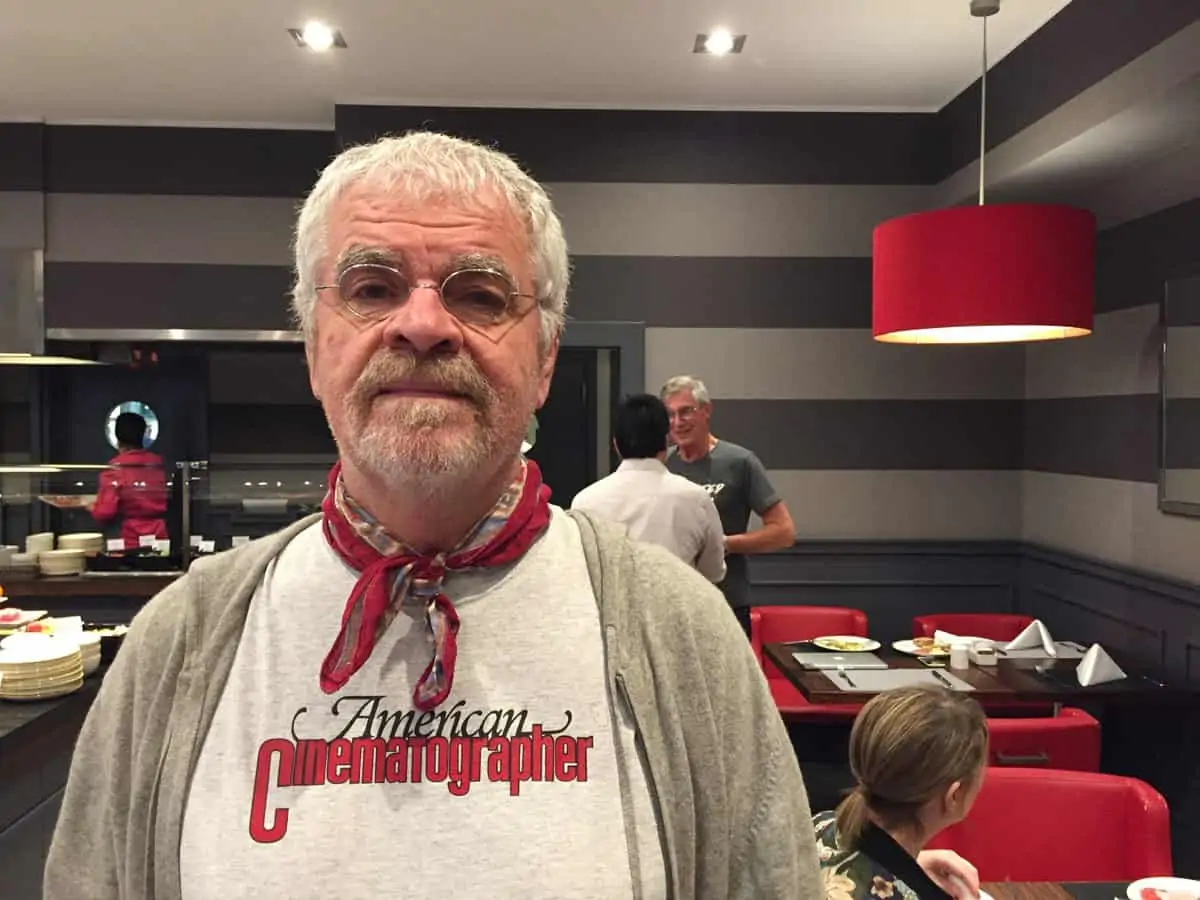
Wednesday 15th November:
Owsianka, in the company of the eloquent and impeccably-dressed Denis Lenoir AFC ASC, is a wonderful way to kick start my big day with Ed Lachman. Louis-Philippe tells us about up-and-coming IMAGO events, including the next awards in March 2019, in either Belgrade or Ljubljana.
My mobile rings. The ever-so-faint voice of Ed Lachman whispers that the doctor has been. He’s under orders to not speak and stay in bed for the next three days. Whilst the inevitable cancellation of our Kodak event is disappointing in the extreme, the gap is neatly filled by an in-depth look at Kodak’s forthcoming Super 8mm camera, with its development manager Holger Schwärzel. The camera is near the end of its development path, and is set to ship in the first half of 2018. It will come with a 6mm lens as standard, but will take other C-mount glass. Four stocks will be available – 50D, 200T, 500T and a B&W reversal – plus Ektachrome reversal later in the year. Kodak will offer a processing and HD scan service, but pricing is yet to be revealed. Holger reckons interest in this consumer product has been huge, as well as from students and cinematographers.
I hear Ed has disobeyed the doc, and made it to the Opera Nova. So I take Holger, plus the Super 8 camera, over to meet Ed. A gaggle of onlookers turns into a fascinated throng as Holger shows the prototype to Ed. Ed nods and points and gives thumbs ups.
ARRI’s Big Screen Experience is opened by Stephan Schenk, MD of ARRI Cine Technik and general manager of the Camera Systems business unit. He says, “ARRI cares about images: we want to give you the best overall image quality, with the most pleasing skin tones and colours, from cameras that give the best overall production value, that are quick and easy to operate, whilst providing efficient on-set and post production workflow.” The audience’s approval is palpable. “Today we’re celebrating 25 years of Camerimage and 100 years of ARRI, so we’re going to show something very special.” Indeed, we’re treated to a terrific 40-minute film of DPs from around the world extolling the virtues of precision German engineering in camera and lighting.
Panavision’s party is packed to the rafters. A vodka luge is dedicated to 50 years of LEE Filters, with all manner of colourful vodka-based drinks to quaff. Over delicious mushroom/venison pasta parcels, and an apple pie, I find myself discussing camera technology with Michael Cioni, SVP of innovation at Panavision & Light Iron. He says dozens of Millennium DXL large format cameras have been made, and that he’s travelling the world not just to support and advise users, but also to listen and learn about what’s needed in the next generation of Panavision cameras. Out in the garden, lots of laughs with Katie Swain, Kate Kotcheff, Angus Hudson. As I’m about to get my coat, Judit Romwalter from Sparks makes introductions to the two Hungarian DPs in competition – Máté Herbai who lit On Body And Soul, and Tibor Máthé who lensed The Butcher, The Whore And The One-Eyed Man. Good luck, I say!
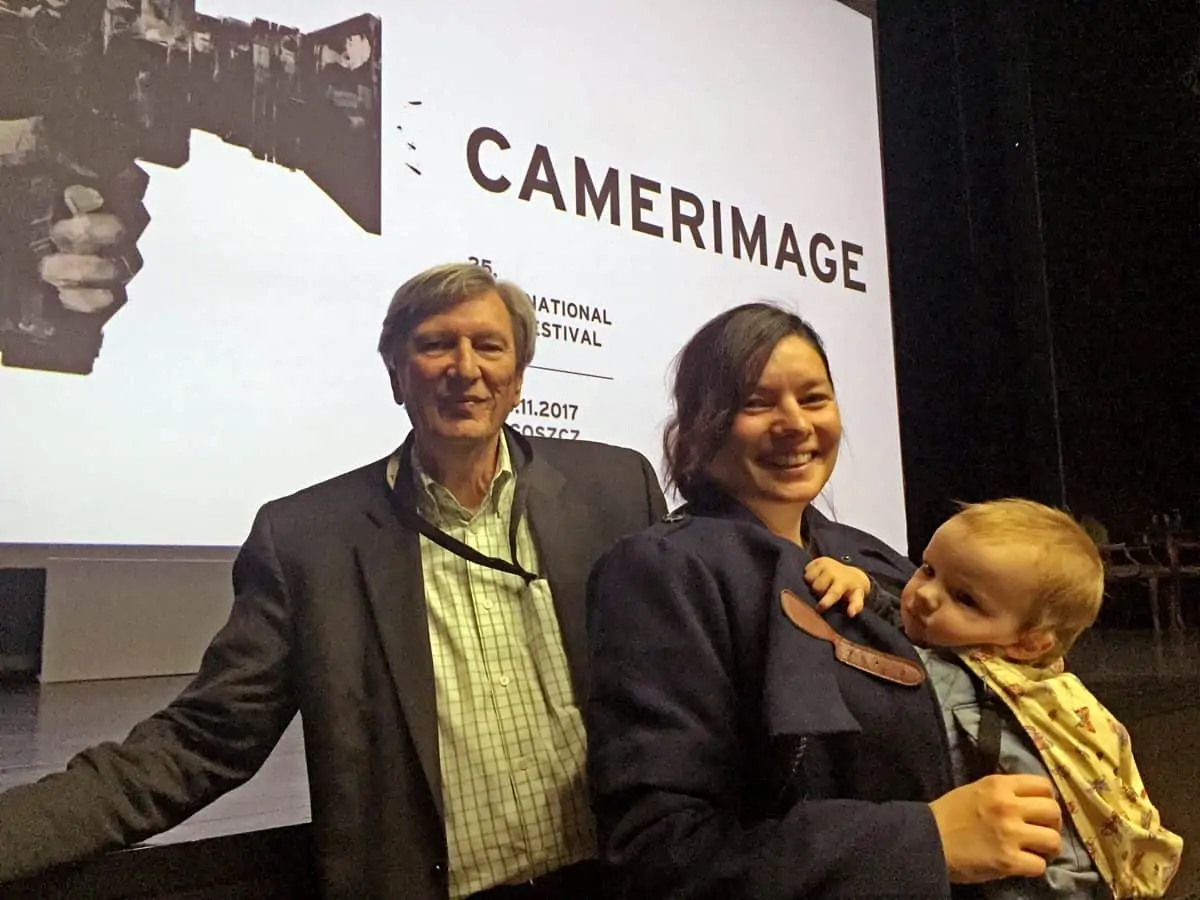
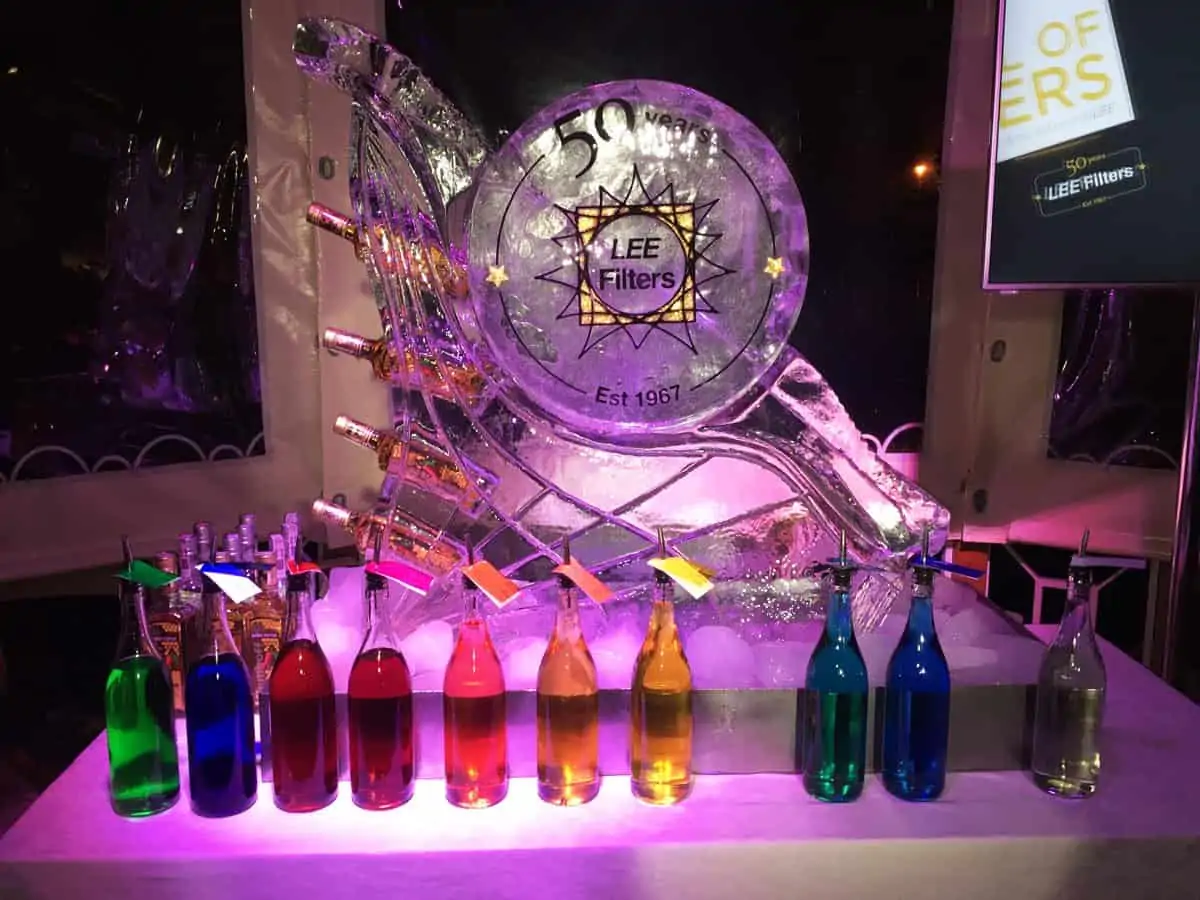
Thursday 16th November:
Owsianka again, but this time with Marc Horner and Tom Fletcher from Fujinon. Kim Snyder is leaving for LA. I must find John Bailey ASC, the recently-appointed president of the Academy, who’s arriving from LA today. Vittorio asks me to visit his seminar later. Richard Andry wants to know what effect Brexit will have on the UK film industry. It’s my take that unless HM Government changes any laws, that the overall picture for the UK film industry looks peachy, although issues lie ahead for anyone exporting/importing goods in Europe, and there could be problems for the large, international, peripatetic workforce employed by the VFX houses. But we'll have to see. I notice Richard is wearing the wrong T-shirt for our tastes – over to Robert & Robert! Nigel Walters says the attendance at this year’s Camerimage festival has swollen by 1,500, up to over 5,500.
Vittorio’s session is rammed to the rafters, so I opt for some headspace before my Panasonic event, and head to the canteen. Today’s fare is a pork-burger with rice and a concoction of chickpeas, carrots and green beans. It’s delicious. The well-attended Panasonic event with William Wages is lively and invigorating, thanks to his indefatigable energy and loquaciousness. He has found ways of working with the Varicam, plus Fujinon zoom lenses, that deliver fast set-ups and good-looking pictures, and he’s more than happy to reveal details about his work and answer the pithiest of questions.
I’m about to leave for the Opera Nova, but my eye is caught by the presence of a towering figure chatting to a woman with a baby. Blimey, it’s John Bailey and Elen Lotman ESC, who has wee Arthur swaddled warmly at her front. John is screening Mishima: A Life In Four Chapters, a film he shot in 1985 for Paul Schrader, executive produced by Francis Ford Coppola and George Lucas. It’s an imaginative portrait of the Japanese writer/would-be revolutionary Yukio Mishima, involving different colour palettes, locations and exquisite set-builds, which Jamie Harcourt and I discuss on the way to the Holiday Inn for Panasonic’s party. More apple pies are consumed. Amongst the gathering, I meet Charlotte Bruus Christensen DFF and VR wizard Jannicke Mikkelsen FNF, who are both separately up on-stage tomorrow.
Friday 17th November:
7.00am breakfast, before we jet back to Blighty. Although we’re missing a host of events about diversity and inclusivity today, John Bailey is up and around, and reveals these topics are top of his agenda at the Academy. As we wait at Bydgoszcz airport for our flight, how appropriate it is that we meet Ula Pontikos BSC, author of the images for Film Stars Don’t Die In Liverpool, and ask if we can report on her work.
So has Camerimage 2017 been a classic? Well, there aren’t too many other places you can go to enjoy the fellowship and camaraderie of cinematographers from right around the world. Thank you to Marek, Kazik, Marek, Darek and Barbara for your help and support. Camerimage is wonderful. Until next year!




